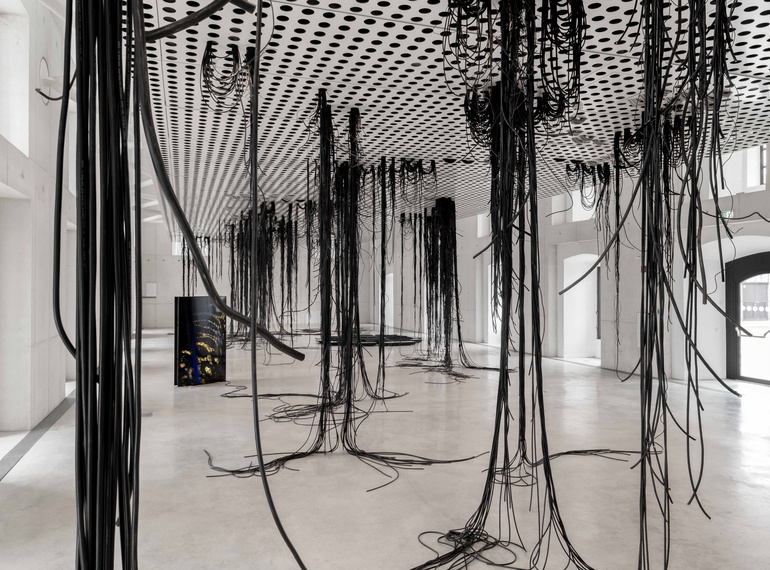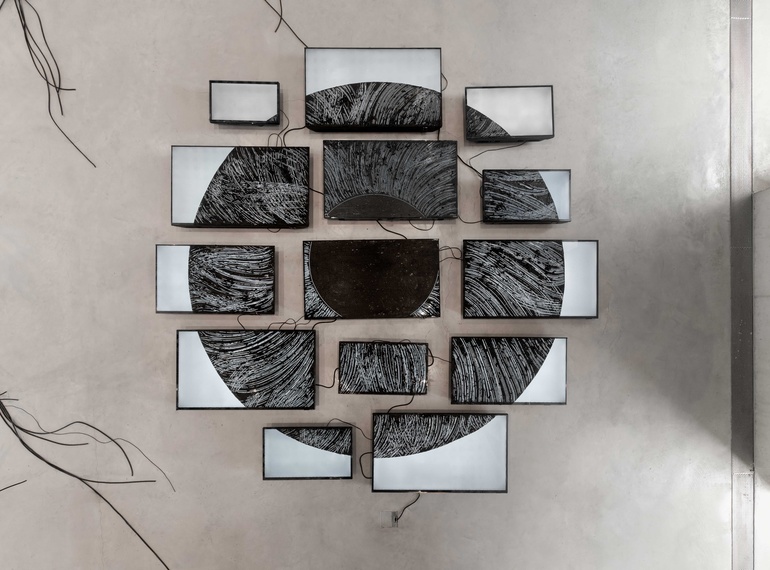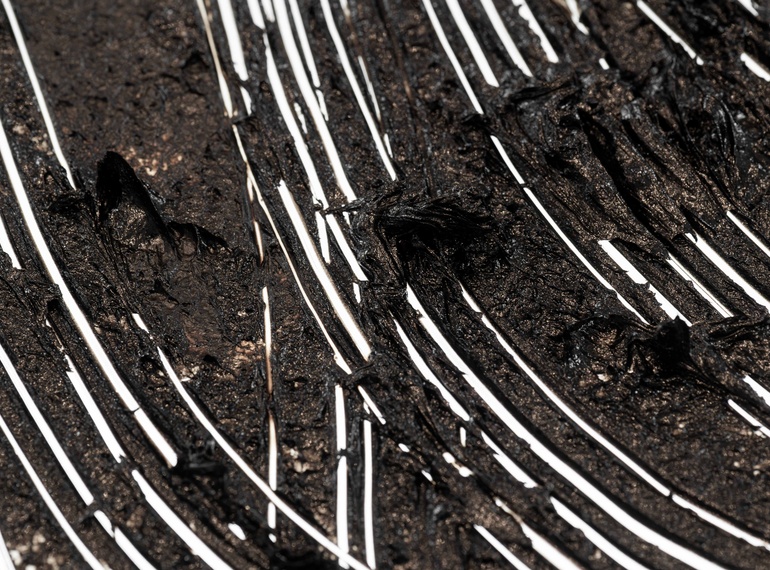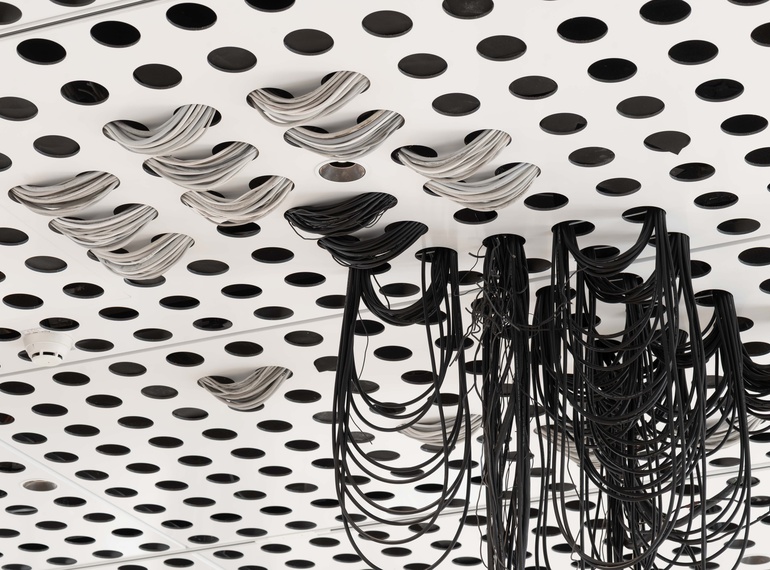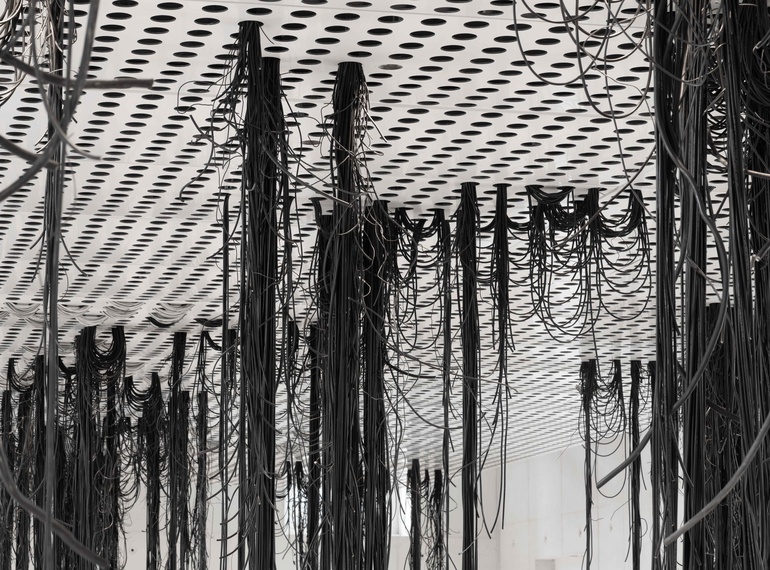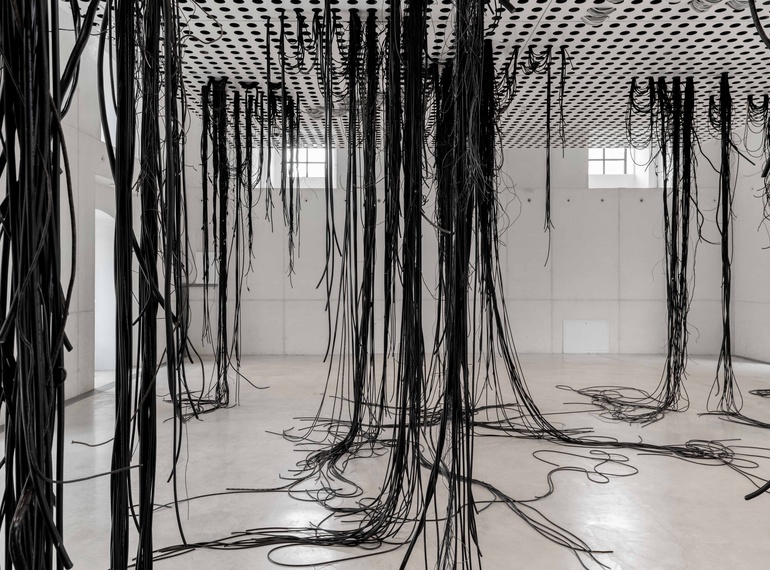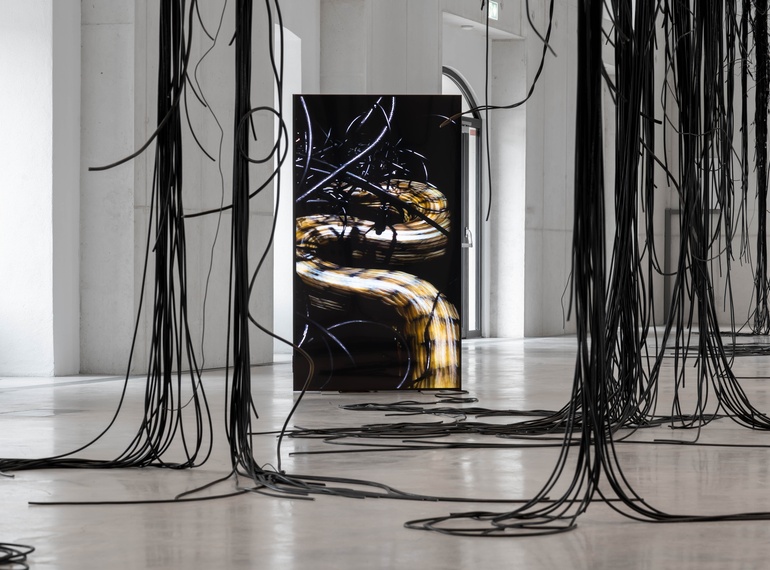Aleksandra Vajd & Anetta Mona Chişa
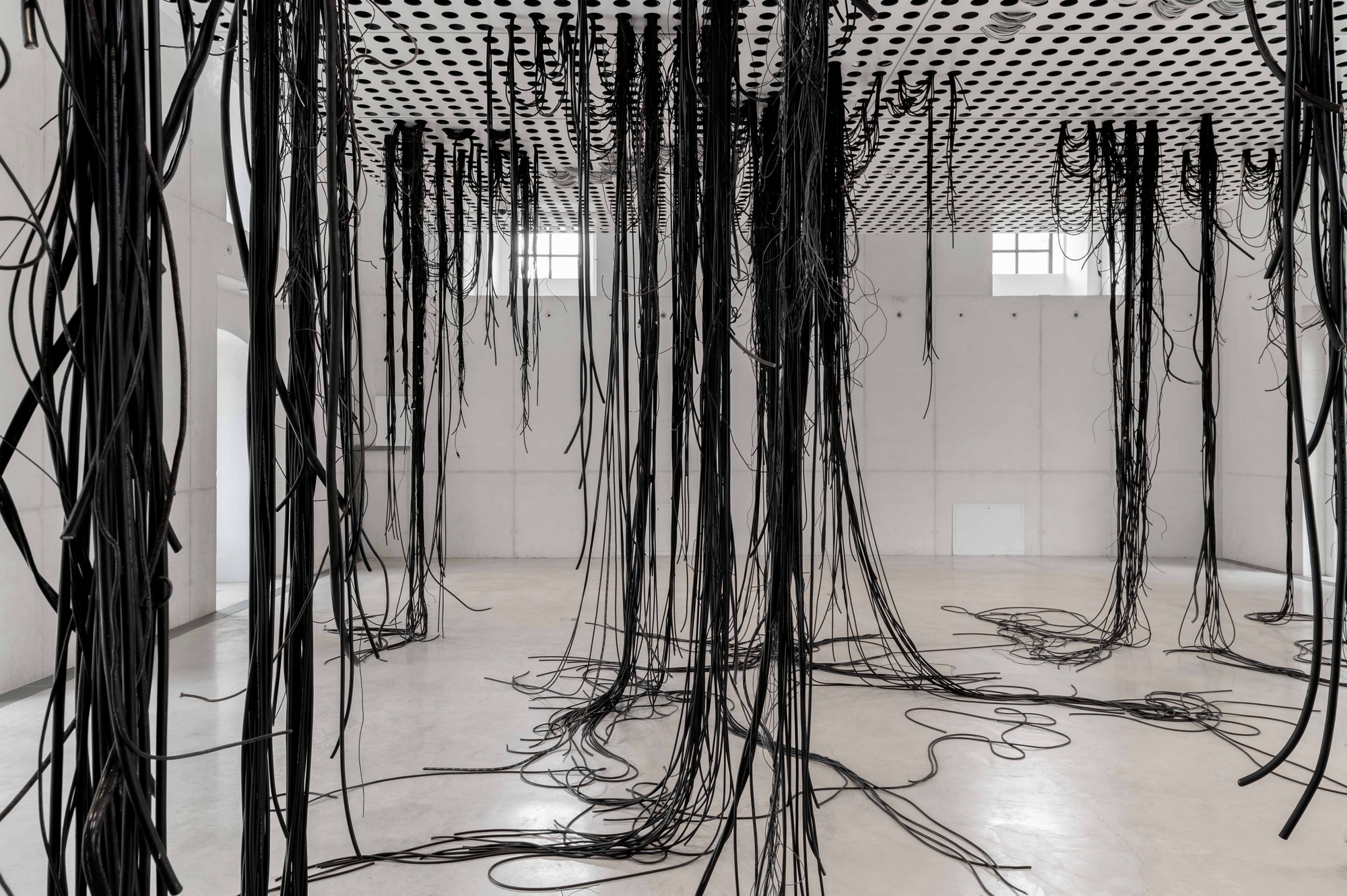
The collaboration between Aleksandra Vajd and Anetta Mona Chişa explores the material and symbolic alchemy of photography. Their spatial installations, interweaving the specificities of gallery architecture, reflect an understanding of photography as a medium embedded in broader ecological and technological processes.
From the raw materials and energy sources required to build and power our devices, to the environmental impacts of their production and disposal, media technologies and culture are fundamentally tied to Earth’s geology and ecology. Attention to the materiality of technologies that moves beyond the notion of media as merely cultural artifacts allows us to also view photographic practice within an expanded, planetary framework. Tar Star unfolds photography as a process that involves more than just humans and is embedded in material transformations, reaching far into the past and future, beyond our presence on the planet.
The connecting thread of the exhibition is the entanglement of cables, evoking global networks of communication and energy distribution. The cables coil through and descend from the ceiling, crawl out from the floor, and finally tangle in the videos displayed on the screens they power. They form three main nodes, each exploring – through various material, formal, and symbolic associations – the role of the Sun in processes shaping photography in its analogue and digital manifestations.
One of these nodes is an arrangement of screens on the floor, emanating artificial "natural white" light and a low, pulsing hum – a sonic representation of solar activity. The screens are partly coated with a black, tar-like substance, a mixture of natural bitumen, vaseline and lavender oil. Such a mixture was used in heliography (from the Greek helios, meaning sun, and graphê, meaning writing or drawing), an early 19th-century technique which harnessed bitumen's light-sensitive properties to fix the image in the camera obscura, producing what is considered the first known photograph.
The ability of sunlight to cause chemical changes on surfaces, leaving a lasting trace, led early photographs to be viewed as "sun drawings" created by the "hand of nature," with humans acting as mere assistants. In this sense, photography can be understood as a continuation of ancient processes of imprinting through light’s interactions with matter, such as sun bleaching and skin tanning, or even through fossilization.
The bitumen screens compose a black circle – a black hole, an oil well, perhaps a pupil, or a black Sun, that slowly solidifies over the course of the exhibition. Bitumen, with its fossil origin, reminds us of its kin: the fuels that make up our technological devices and remain the primary energy source. As ancient sunlight, buried in the remains of prehistoric organisms, fossil substances embody the Sun’s dark legacy, which has – since the dawn of the Industrial Revolution – seeped into every pore of our existence.
On the ceiling, through the perforated panels, cables weave a different kind of "sun drawing". Its motif is based on the latest synoptic solar map – including sunspots – that was created using digital images captured by Earth-based observatories. The invention of photography revolutionised astronomical observation, which had previously relied on imprecise hand-drawn sketches and memory. With photography, it became possible to accurately document, track, and predict solar activity – solar storms and flares, which can negatively affect the technological infrastructures vital to societal and economic processes.
The perforated panels, a distinctive architectural feature of Cukrarna Gallery, recall the punched cards used in early automated looms, which inspired the development of computer programming, thereby underscoring the connection between digital technologies and weaving. Weaving, traditionally a women's craft, has long served as a narrative and mnemonic medium, embedding events, cultural symbols, myths, and even spells into fabric. Picking up this thread, Tar Star continues with weaving as a practice of fabulation for post-human times.
In the videos, the cables intertwine with snakes, whose shapes they recall. While it is hard to avoid the numerous meanings snakes carry in our culture, their presence in Tar Star may evoke technology’s dual nature as a pharmakon – both remedy and poison, depending on its use. Perhaps they signal cyclical nature or transformation. Escaping the meanings we wish to impose upon them, their sun-loving bodies weave through the technological undergrowth and the loops of our anthropocentric patterns, crafting a different narrative: one that testifies to the deep entanglements of technology with nature, and of human and non-human worlds – an unfinished story, with an uncertain yet open future. What role will we play in it?
Curated by Tjaša Pogačar
With the support of
 ZOO Čudežne zverinice Bled.
ZOO Čudežne zverinice Bled.
Opening hours
Tuesday to Sunday: 10.00–19.00
Tickets
Free entry.
